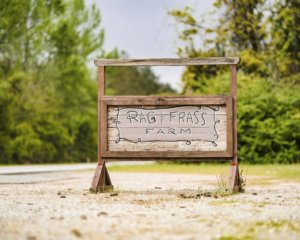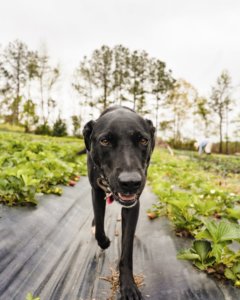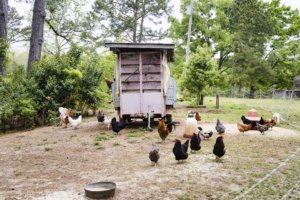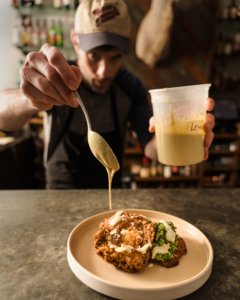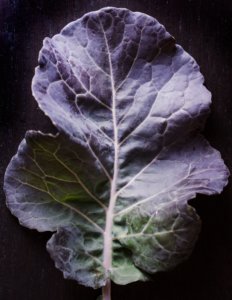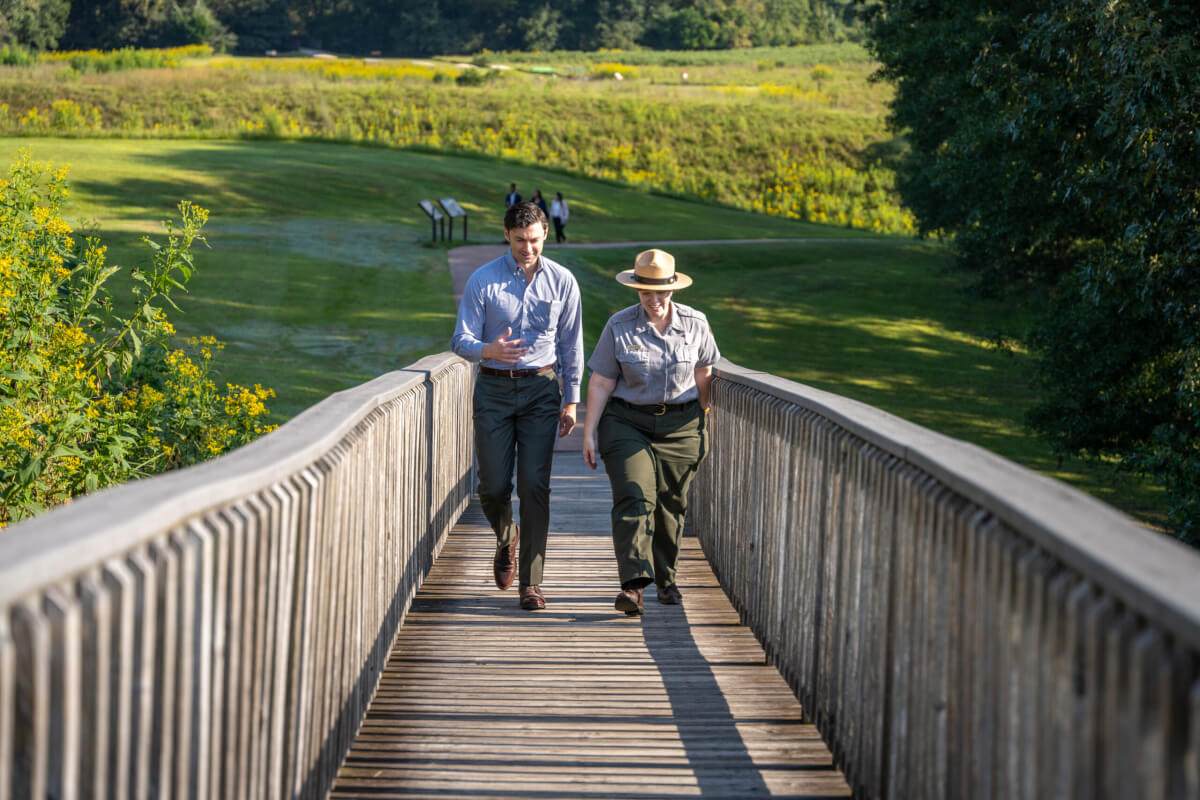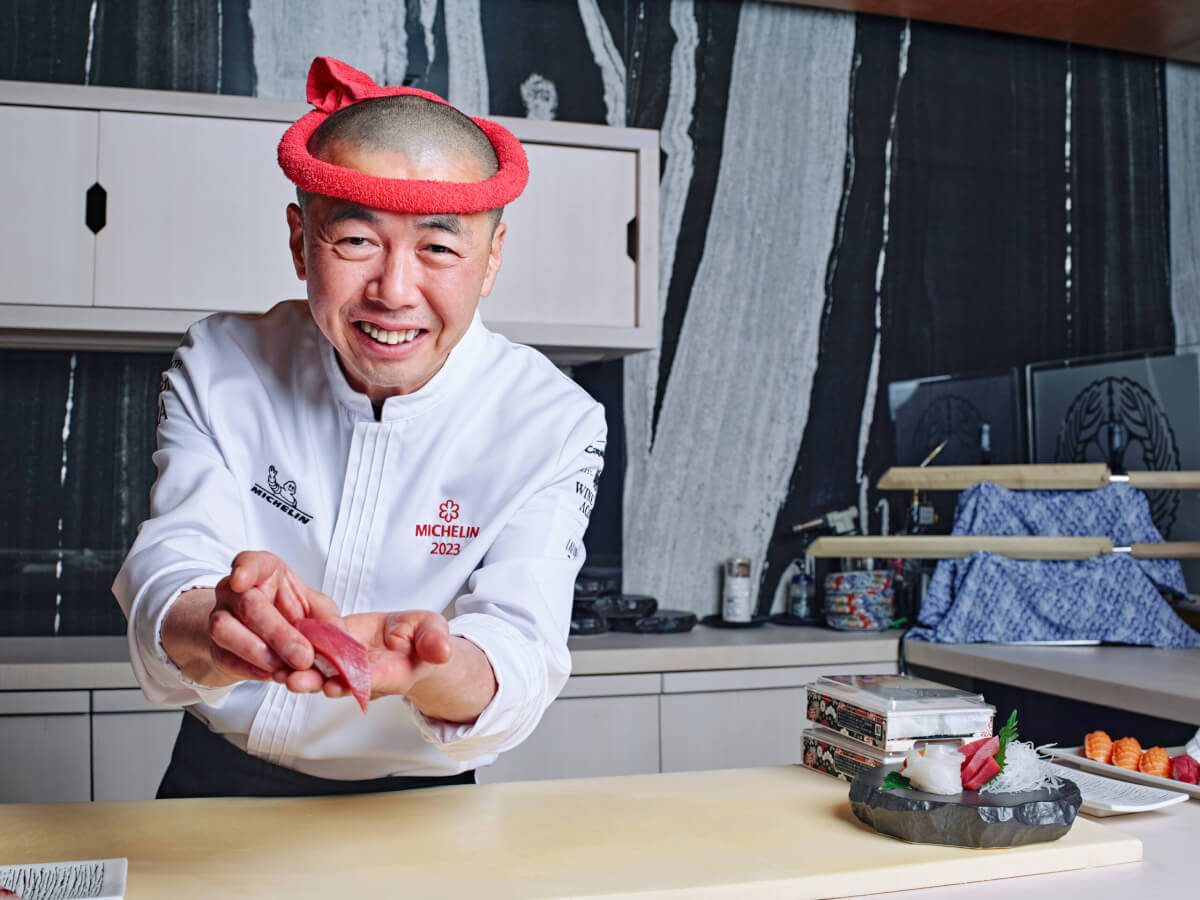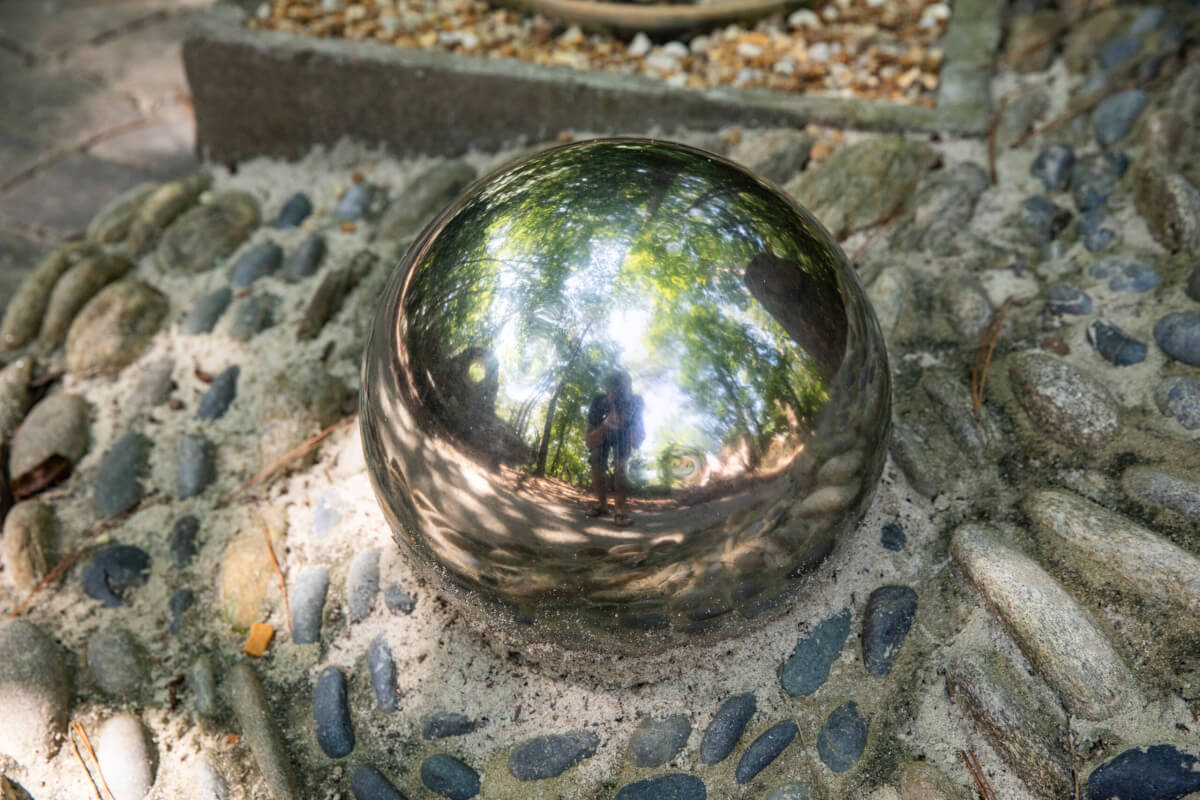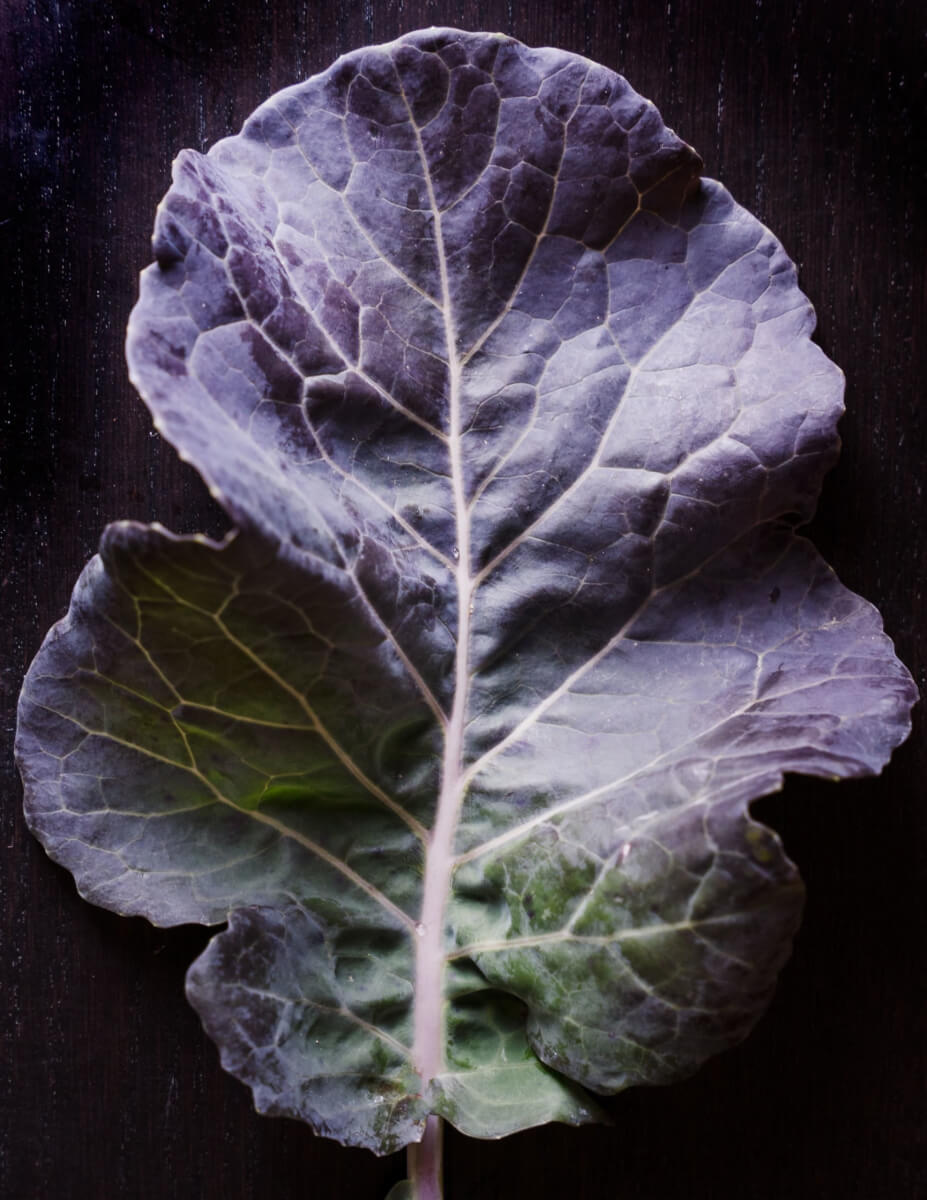
Bunches of blues
Story and photos by Mike Young
“We should all eat like farmers,” says Julia Asherman, owner of Rag & Frass farm. “If there are only three things growing, then we only eat those things.”
A black dog named Skillet leads the way as we walk past neat rows of leafy green vegetables, some just beginning to show signs of life as they reach up from the ground, others sprawling in all directions, visibly ready to harvest.
Rag & Frass harvests on an as-needed basis to operate as close to zero waste as possible. They pick only what they intend to sell that day, and only when the food is perfect. These crops have never been treated with pesticides, and their small imperfections — something that may turn you off at the grocery store — are signs of purity.
Skillet, mindful of his footing near the crops, comes up short about halfway into the field. We have reached our destination.
“These are our Alabama Blue collard greens. They’re an heirloom variety that have grown a bit of a following,” Asherman says. “We got the seed passed down to us by a farmer friend, who had received the seed from another farmer years back. Now, on top of growing the crop, we also grow the seed for a seed company.”
She spots a bunch that is bursting with purple and green hues. With one smooth motion, she severs them from the stem and neatly bundles them all up, with a rubber band holding them in place.
Collard greens are a staple in the South, and while they have been grown for thousands of years all over the planet, now the words “collards” only bring to mind one preparation: stewed. Stewed greens were created when enslaved people, using African cooking techniques, were given only a few crops they were allowed to feed their families with — collards being one of them. They were also given animal scraps, such as pig’s feet.
From this terrible piece of American history stems one of the pillars of what we know today as “Southern cooking.” Nowadays, greens are a celebrated food for all Southerners and are a mainstay of any decent Southern meal.
For Adrian Bryant, who grew up on a farm just outside of Albany that grew cotton and peanuts, what really comes to mind when she thinks about collards is her Aunt Bunch.
“Her real name was Catherine, a surprise to most of the people at her funeral, who only knew her as Bunch. By the time I was born, she was already in her 60s, so most of my memories of her are of this ancient woman. She lived in a little house on a hunting lodge, taking care of the cooking and cleaning for the guests,” Bryant says.
Everything Aunt Bunch cooked was incredible, “but her collard greens were something completely different. … Unfortunately, most of her recipes were never written down,” Bryant says. “These days, greens make me feel different things depending on who is cooking. If I’m doing the cooking, I’m usually nervous that I will mess them up. If my older sister is doing the cooking, I’m seeing what other sides are available. If my younger sister is cooking, I’m thinking about taking extra blood pressure medication.”
Although greens are a huge part of her heritage and tradition, she says the staples of her dining habits today look more like hibachi and sushi, enchiladas and mussels.
“Looking back, I have memories of picking greens and butterbeans in the hot sun, watching for rattlesnakes, but I also remember big family dinners where no one was looking at their phones, everyone sitting in silence with heads bowed in prayer, while Aunt Bunch piled food on your plate,” Bryant says. “It’s all bittersweet.”
It falls on the shoulders of chefs and farmers today to carry the weight of these traditions, while still breathing new life into ingredients. Greens today, with their seeds passed down through generations of local farmers, represent so much more than simple ingredients.
Back at Rag & Frass, Asherman quickly dunks the collards into an ice bath, referred to as hydro-cooling, which dissipates any residual heat from the sun. Packed up with the rest of the farm’s produce, they are ready to go to market. We head off to Mulberry Market in Tattnall Square Park, one of a few meeting places set up around the city where farmers and other small purveyors can skip the industrial supply lines and meet directly with their customers.
Markets allow customers, like Brad Stevens, executive chef of farm-to-table restaurant Dovetail, a chance to meet and form relationships with local growers. Stevens has been purchasing directly from these farms long enough that they drop his orders directly to the restaurant.
“I see a healthy market as a sign of a healthy community. To me, the ability to put a face to a producer immediately doubles the value of the product,” Stevens says. “When you are able to tell the story of how the collards go from seed to plate, that’s invaluable to people. That’s why our focus at Dovetail is to use as many ingredients cultivated or produced in the region as possible.”
We take our collards and a few other odds and ends to Dovetail, where Stevens is making buttermilk fried chicken with collard green and olive pesto, served over a roasted red pepper hoe cake. It appears Southern at first glance, but is thoughtfully packed with Mediterranean flavors. To make the collard pesto, he starts by removing the stems from the greens and then quickly dunks them in boiling salt water followed by an ice bath.
The greens are then squeezed out through a towel to remove excess water, concentrating the color and flavors. They’re added to a blender along with parmesan cheese, salt, lemon zest and olives. Georgia-made olive oil is added slowly as the blender spins, until it nears the consistency of a rough paste.
The end product is a pesto that hits all the earthier low notes you expect from collard greens and olives, while still managing to be light and fresh. It is served alongside buttermilk fried chicken and a hoe cake with a tahini drizzle.
“I particularly like working with Alabama Blues. The milder flavor and touch of sweetness allows for preparing them with a wider range of techniques, from stewing them down to serving raw as a garnish,” Stevens says.
Although you could leave the cultivation to the professionals and go pick up some Alabama Blue collards at your local market, if you want to grow your own, check out the website south-ernexposure.com. The seeds for sale there were grown just outside of Macon, under the watchful eye of Skillet. Asherman recommends direct sun and a neutral soil acidity with plenty of organic matter.
Mulberry Market
The Mulberry Market has been in operation since 2009 as a year-round, producer-only market. In addition to the fresh produce grown by Rag & Frass and other farmers, its vendors include those selling grass-fed beef, raw goat’s milk, eggs and baked goods both sweet and savory. In addition to supporting local agriculture, the market offers the Georgia Fresh for Less program, which doubles SNAP dollars up to $50 every week for eligible shoppers. This ensures that all members of the community can not only enjoy locally-grown food, but support the farmers who work so hard to bring it to them.
Brads Stevens’ Collard Green and Olive Pesto
- 3/4 pound Alabama Blue collards
- 1/2 cup pitted olives
- 1 teaspoon minced garlic
- 1/2 tablespoon white wine vinegar
- 1 lemon, zest and juice
- 1/2 cup grated parmesan cheese
- 1 teaspoon Kosher salt
- 1/2 teaspoon coarse black pepper
- 1/2 cup Georgia olive oil
Blanch and shock trimmed, rinsed and cut collards. Combine collards through pepper in a food processor. Drizzle in olive oil while blending, until all ingredients are just incorporated.




